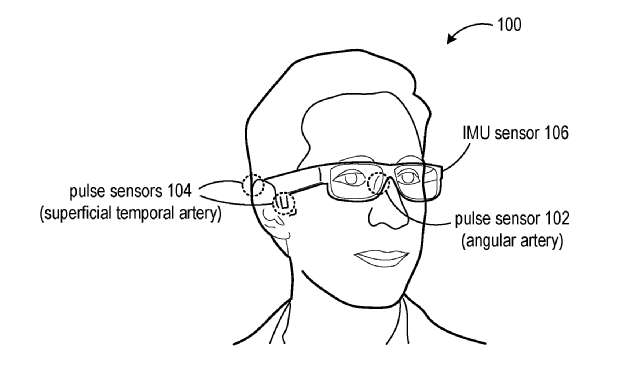Microsoft patents blood pressure specs
Microsoft has entered the tech giants’ battle for smart glasses-based health applications, filing a patent for a wearable device called Glabella, that continuously and unobtrusively monitors heart rates at three sites on the wearer's head. Apple, Amazon, Google and Samsung, among others, have all been looking at entering the health-monitoring wearable device market.
According to Microsoft researcher Christian Holtz’s eponymous website, the prototype incorporates optical sensors, processing, storage, and communication components, all integrated into the frame to passively collect physiological data about the user without the need for any interaction. Glabella continuously records the stream of reflected light intensities from blood flow as well as inertial measurements of the user's head. From the temporal differences in pulse events across the sensors, the prototype derives the wearer's pulse transit time on a beat-to-beat basis.
Holtz’s site also says pulse transit time - the delay between the moments at which the blood ejected from the heart reaches the three sites - functions as a proxy measurement to monitor the short-term behavior of the user's systolic blood pressure, and that their evaluation shows a significant correlation with systolic blood pressure values measured using oscillometric cuffs during in-the-wild use. It also says the frequent nature of sampling has the potential of helping in detecting short-term anomalies in an individual's blood pressure, such as temporary hypotension and hypertension, response and recovery times to medication, food intake, activity, as well as other events during the day.
The glasses are a standalone and socially-acceptable form factor, it says, with all components integrated to minimally if at all impact the user’s daily patterns. Users are not required to remember to measure or consciously stop their activities to take a measurement. The device does not require being semi-permanently attached to or removed from the user's body, such as ECG electrodes.
There is no word yet on when, or even if, Microsoft will take the concept to market.



























